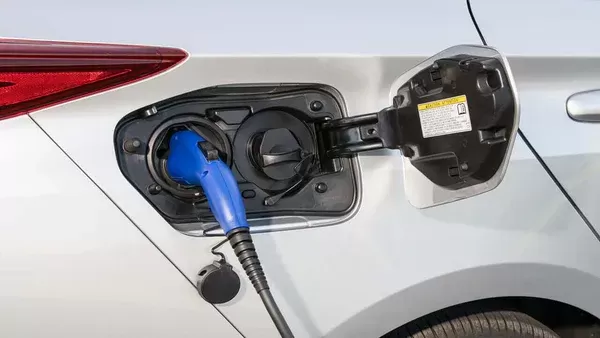Notifications

7 minutes, 21 seconds
-31 Views 0 Comments 0 Likes 0 Reviews

As a top EV charger manufacturer in China, LiCB Charge offers reliable AC and DC electric vehicle charging stations along with complete charging solutions.
The global shift to electric vehicles (EVs) is happening faster than ever. Governments worldwide are pushing ambitious net-zero goals, and automakers are phasing out internal combustion engines. As a result, the demand for reliable, scalable, and intelligent EV charging infrastructure is surging. At the heart of this infrastructure is the Charge Point Management System (CPMS)—an advanced software platform that acts as the operational backbone of EV charging networks.
A CPMS is more than just a monitoring tool—it's a comprehensive solution that allows charge point operators (CPOs), e-mobility service providers (eMSPs), and businesses to manage, optimize, and monetize their charging stations. From real-time remote management to dynamic energy control and seamless user authentication, a CPMS ensures that EV networks run efficiently while providing a smooth experience for drivers.
This guide will explore:
The core architecture and functionality of a CPMS
Why CPMS solutions are essential for modern EV charging networks
Key challenges CPMS helps address in EV charging
The latest innovations in charge point management technology
The future of CPMS in the growing EV landscape
By the end, readers will have a clear understanding of how CPMS platforms are transforming the EV charging ecosystem and supporting the sustainable expansion of electric mobility.
A Charge Point Management System (CPMS) is a centralized software solution designed to monitor, control, and optimize EV charging stations. It serves as the central hub for all charging operations, providing real-time data, automated management, and advanced analytics. Unlike individual charging stations that operate independently, a CPMS integrates multiple stations, enabling networked intelligence and dynamic control.
A modern CPMS consists of several essential modules:
Central Management Dashboard: Provides an overview of all connected chargers, displaying status, usage, and errors. It enables remote start/stop, reboots, and firmware updates.
User Authentication & Access Control: Supports various authentication methods such as RFID cards, mobile apps (QR codes), plug-and-charge (ISO 15118), and SMS/email authorization.
Billing & Payment Processing: Offers flexible pricing models (e.g., per kWh, flat rates) and integrates with payment gateways like Stripe, PayPal, and Adyen for automated invoicing.
Energy Management & Load Balancing: Distributes power dynamically to prevent grid overload and incorporates renewable energy sources (solar, wind) to optimize energy costs.
Reporting & Business Intelligence: Provides analytics on usage, peak demand, revenue trends, and sustainability reports, alongside predictive maintenance alerts.
As EV adoption continues to rise, CPMS enables seamless expansion of charging networks. It allows operators to easily add new chargers, monitor large networks from a single dashboard, and standardize operations across different hardware brands.
Unmanaged EV charging can place significant strain on local power grids. A CPMS helps mitigate this by implementing intelligent load balancing, integrating demand-response systems, and maximizing the use of renewable energy sources.
CPMS platforms improve user satisfaction by offering features like real-time status updates (via apps and navigation systems), fault detection with automatic alerts, and seamless roaming between different networks using interoperability protocols like OCPI.
CPMS unlocks new revenue streams, including subscription-based charging plans, reserved charging spots, premium parking, and advertising opportunities with retail partners.
AI-driven predictive maintenance uses data to detect anomalies and anticipate component failures before they occur, reducing downtime and maintenance costs.
CPMS platforms manage Vehicle-to-Grid (V2G) systems, allowing EVs to feed energy back into the grid, facilitating energy trading and optimizing grid stability.
Blockchain technology enables secure, decentralized billing processes, reducing fraud and enhancing transparency. Smart contracts allow for automatic payments, improving the overall customer experience.
CPMS platforms can autonomously manage fleet charging, adjusting priorities based on battery levels and ensuring efficient energy use for electric vehicles in fleets such as robotaxis.
As charging speeds increase to over 350kW, CPMS systems must ensure grid stability, using battery buffering solutions to manage high power demands.
Future CPMS platforms will support cross-network roaming, enabling users to seamlessly charge at different stations, while automated plug-and-charge features (ISO 15118) simplify the process.
CPMS will increasingly integrate with smart city infrastructure, enabling features like adaptive charging pricing based on traffic patterns and synchronization with public transportation and energy grids for more efficient overall urban energy management.
A Charge Point Management System is no longer optional—it’s an essential part of the future of electric mobility. As the global EV charging network expands, CPMS platforms will ensure scalability, reliability, and sustainability. By offering advanced management tools, improving user experiences, and integrating with broader energy systems, CPMS will play a pivotal role in supporting the widespread adoption of electric vehicles and driving the future of transportation.Know more about Google SEO Directory
China EV Chargers EV Charger Manufacturer Smart EV Chargers Electric Car Chargers Electric Vehicle Chargers Electric Car Charging Stations

